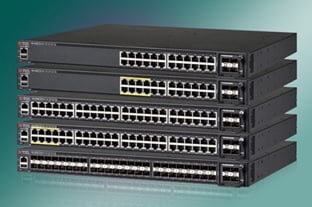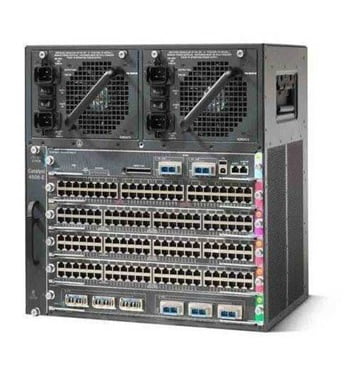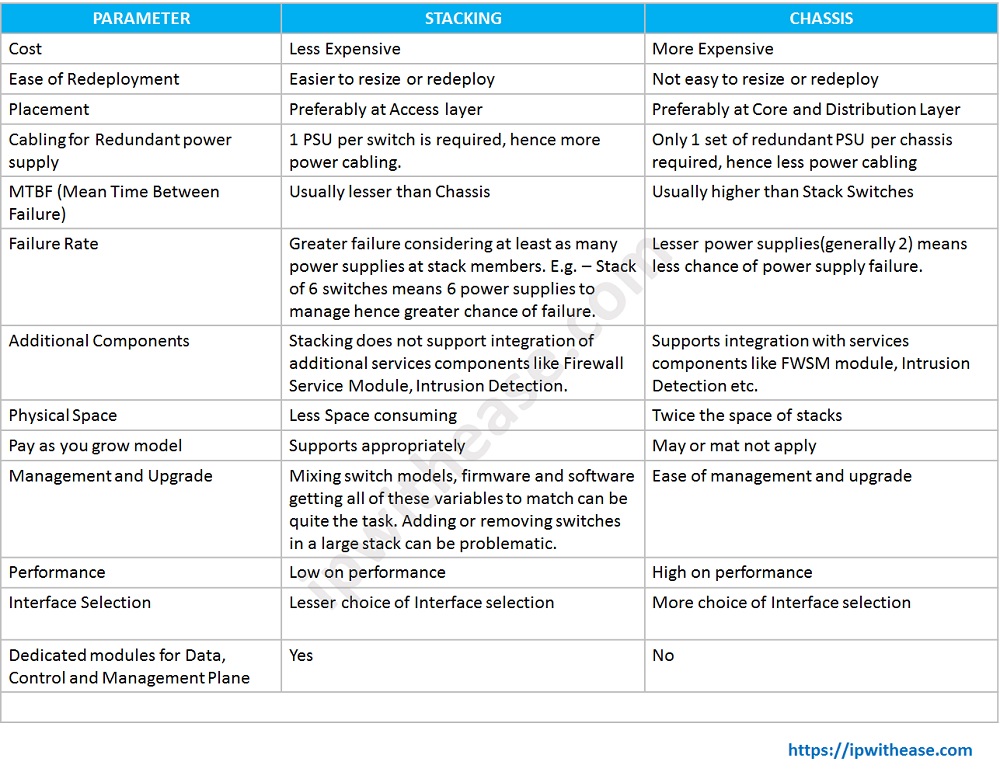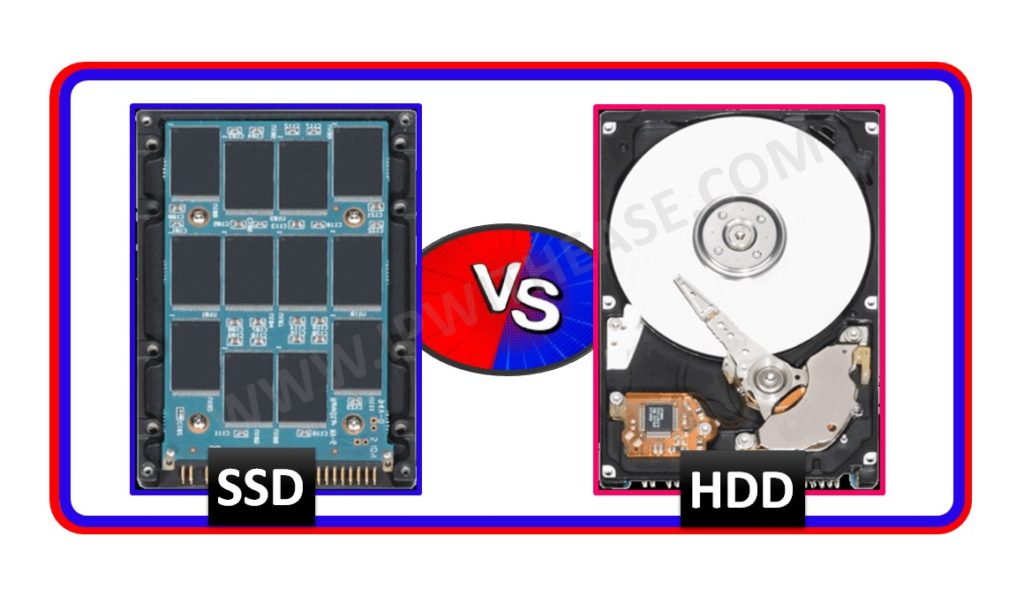Introduction to Stacking & Chassis
The argument on Stackable Switch and Chassis switch has been there for long. Prima facie, Stackable switches are understood to be for medium and low end customers which Chassis based state of art switches are considered for high end market customers and service providers. Let’s deep dive into the discussion and understand how both the competitors perform on set of functional parameters which are foundation of inclination for customers.
Stacking Switch Solution
In this type of set up, two or more switches are stacked over each other, hence the name ” stacking” is used. All the switches in a stack behave like “one single device”. Thus a stacking solution provides increased number of ports by increasing the number of switches in a stack, while serving the characteristics and features of a single switch.

Features of Stacking Switch Solution:
- Initial setup cost is less and it is easily scalable.
- It requires less space for set up.
- As each individual switch requires a PSU, more power cabling is required.
- It shows increase in failure rate with increase in the number of power supplies. Mean time between Failure(MTBF) is low.
- Integration of additional services components (like Firewall Service Module, Intrusion Detection) is not supported.
- Management is a challenge as adding or removing switches in a large stack can be problematic.
- It has dedicated modules for Data, Control and Management Plane.
Chassis Switch Solution
Chassis switch set up is formed of a fixed number of slots into which the line cards are inserted. Thus, chassis network switch has a common backplane at the core, in which all line cards are inserted.

Features of Chassis Switch Solution:
- Initial setup cost is high, but they have longer life span as compared to stackable switch.
- The space requirement is more as compared to stacks.
- It offers a common power supply, cooling fan, and control plane/ processing modules. Thus only 1 set of redundant PSU is required.
- The less number of power supplies, considerably reduces the chance of power supply failure. Thus, the Mean time between Failure(MTBF) is high.
- Integration of additional services components (like Firewall Service Module, Intrusion Detection) is supported.
- Management is easier.
Comparison Table: Stacking vs Chassis Switch
Below table summarizes the difference between the two, and will help you to choose the best for you, considering the pros and cons of both the solutions:
PARAMETER | STACKING | CHASSIS |
| Cost | Less Expensive | More Expensive |
| Ease of Redeployment | Easier to resize or redeploy | Not easy to resize or redeploy |
| Placement | Preferably at Access layer | Preferably at Core and Distribution Layer |
| Cabling for Redundant power supply | 1 PSU per switch is required, hence more power cabling. | Only 1 set of redundant PSU per chassis required, hence less power cabling |
| MTBF (Mean Time Between Failure) | Usually lesser than Chassis | Usually higher than Stack Switches |
| Failure Rate | Greater failure considering at least as many power supplies at stack members. E.g. – Stack of 6 switches means 6 power supplies to manage hence greater chance of failure. | Lesser power supplies(generally 2) means less chance of power supply failure. |
| Additional Components | Stacking does not support integration of additional services components like Firewall Service Module, Intrusion Detection. | Supports integration with services components like FWSM module, Intrusion Detection etc. |
| Physical Space | Less Space consuming | Twice the space of stacks |
| Pay as you grow model | Supports appropriately | May or mat not apply |
| Management and Upgrade | Mixing switch models, firmware and software getting all of these variables to match can be quite the task. Adding or removing switches in a large stack can be problematic. | Ease of management and upgrade |
| Performance | Low on performance | High on performance |
| Interface Selection | Lesser choice of Interface selection | More choice of Interface selection |
| Dedicated modules for Data, Control and Management Plane | Yes | No |
Continue Reading:
Switch Stacking Basic Setup and Configuration Steps
ABOUT THE AUTHOR

You can learn more about her on her linkedin profile – Rashmi Bhardwaj



